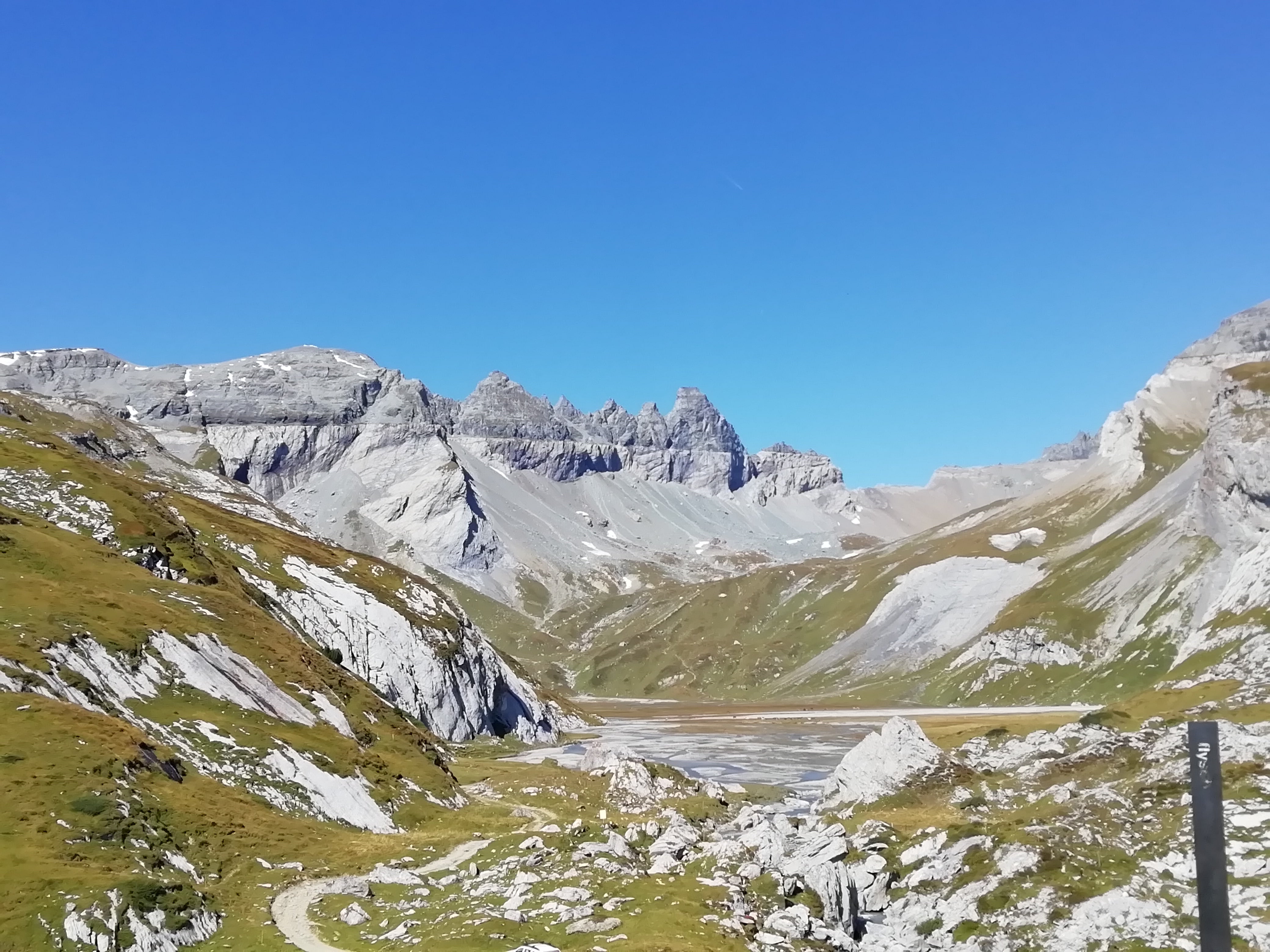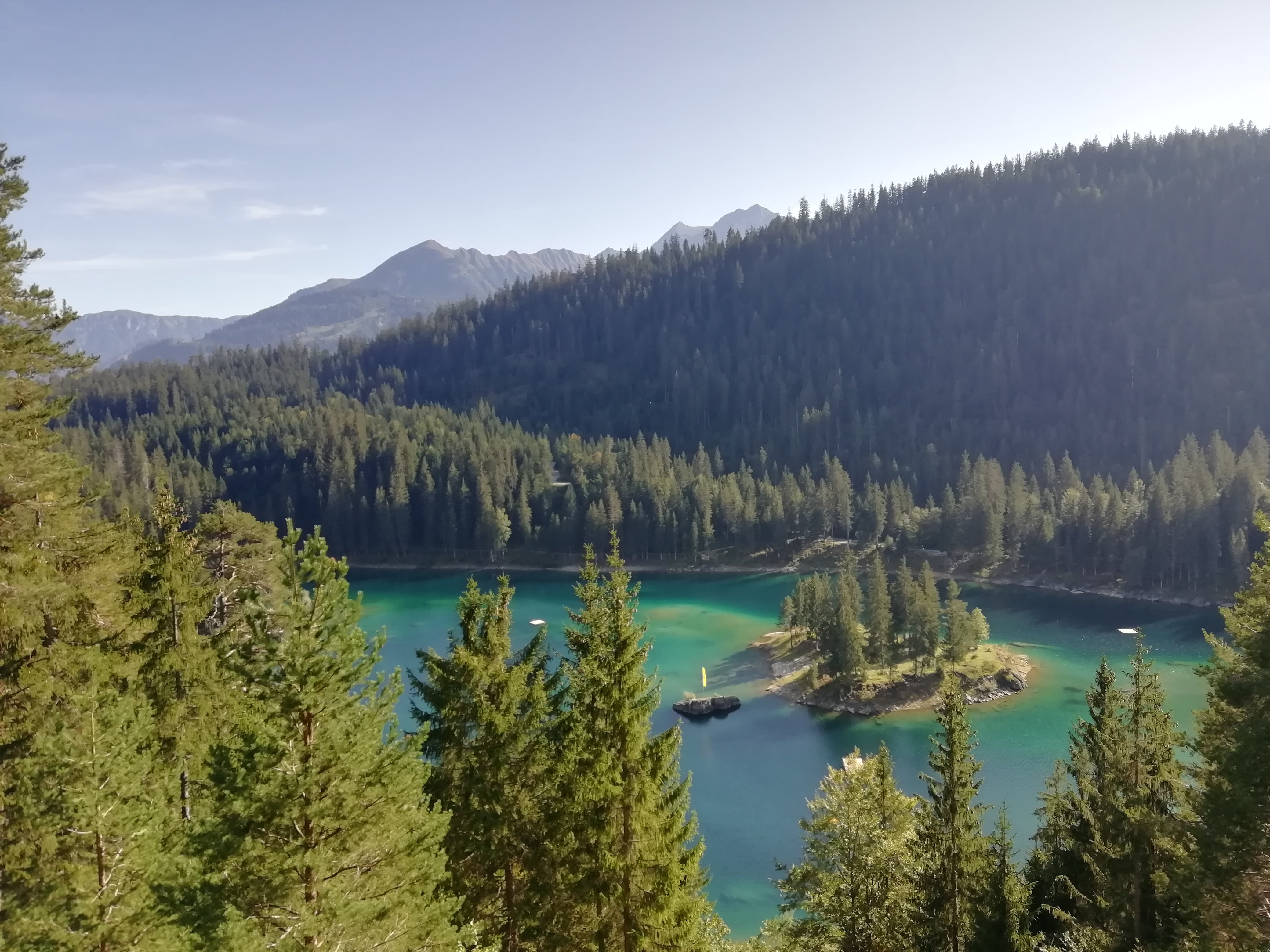River deep, mountain high: adventure in Europe’s ‘Grand Canyon’ region
Forget the US, discover spectacular scenery hours away in Switzerland, writes Joanna Whitehead


More than 8,500ft above sea level in the Swiss Glarus Alps, in a mountain lodge built in the Second World War as a military bunker, my muscles are fatigued and my nerves are frayed.
After three days of biking, hiking, swimming and climbing, the treacherous ascent up to the Segnespass ridge proved to be the final straw, with subsequent tears and profanities bellowed across the majestic range.
Brave souls who made it to the top were rewarded with a lick from Dschinny, the resident St Bernard, but even her affections weren’t enough to soothe our tattered spirits when our guide confessed that she would not have attempted the climb had she known the extent of the damage caused to the route following snowfall a fortnight previously. At her words, the imposing peaks and glaciers surrounding us appeared to take on a more menacing form as the sun sank and the wind picked up.
We did it in the end but with an early-morning descent weighing heavy on my mind, I hunker down into the 12-person bunkroom – and resort to prayer. The following day, a decision is made to close the lodge prematurely for the season following a night of high winds. Yet somehow, despite the mild peril, I’m having the time of my life.
This European “Grand Canyon” region – around 90 miles from Zurich – offers some of the most awe-inspiring natural landscapes imaginable. Dramatic snow-tipped peaks, milky turquoise lakes, lush pine forests and powder-blue skies jostle for attention, while my city-weary lungs take gulps of the clean, fresh air. The peace, solitude and stillness offer a welcome respite for my frazzled brain, with the occasional tinkle of cow-bells (worn by the prettiest of cattle) the only sound disturbing the silence. Pristine streams are so clear I fill my water bottle from their cascade. It all feels very close to paradise.
Mere yards across the ridge sits the Glarus thrust or “magic line” – a rare geographical feature composed of masses of rocks 250 million years old pushed into much “younger” rocks 35 million years old, which give the impression of being upside down. The Alps form the collision point of Africa and Europe and this Unesco World Heritage Site Tectonic Area, Sardona, is one of the few places in the world where people can actually see how mountains are formed. An established pilgrimage site for scientists from across the globe, even those of us who failed our science GCSE can’t help but be wowed by this natural phenomenon.

Next stop: Laax. This resort and the surrounding area might turn into a winter sports hotspot by November but our visit in September proves to be the optimum time for exploration after the summer crowds had dispersed. About 150 miles of walking trails and 200 miles of mountain bike routes run through empty, picturesque forest that hugs the winding Rhine Gorge, with its “Insta-worthy” cyan waters. Visitors can explore this idyllic expanse by train, foot, kayak or canoe but I take my first foray into e-biking instead. It proves to be a smart decision from our guides, who take us up and down some steep, off-road terrain through Flims forest, although easier routes are available. Using the e-bikes enables us to whizz through the trees at speed and with relative ease, leaving us free to focus on the surroundings.
Fading sunlight leads us to Lake Cresta. With just one couple towelling themselves off after a dip, this secluded spot, surrounded by a grove of green trees, feels other-worldly. Despite the high altitude, we’re delighted to discover that the water temperature is surprisingly clement and promptly strip off and dive in. A post-swim meal of Birnen ravioli – pear-stuffed pasta – with a buttery sauce makes for welcome, if unusual, refuelling fodder.
This secluded spot, surrounded by a grove of green trees, feels other-worldly
A short drive away sits the via ferrata Pinut – the oldest surviving in Switzerland. A via ferrata is a protected climbing route common to the Alps, characterised by a steel cable that runs along the route and is attached to rocks, enabling climbers to traverse typically perilous rock faces. Equipped with safety hats, harnesses, ropes and carabiners, we embark upon a demanding climb over ladders, stairs and through caves to three vertical rock faces. Despite being clipped to a steel cable, crossing a horizontal ladder with no hand-rail and a sheer drop of hundreds of metres is still an exercise in mental and physical resilience.
But it’s worth it: over the course of a couple of hours, we’re rewarded with increasingly jaw-dropping views of the lakes, forest and mountains from an unsurpassable vantage point. Initial panic gives way to euphoria as I realise what my body and mind are capable of doing.

Reaching the Flimsterstein plateau at 6220ft is a victorious moment for all. After a brief pause to admire the grazing cows, we descend the mountain via the “cow road” – a route embarked upon annually by the herds after a summer spent on the lush Alpine pastures. The animals are decorated with flowers and garlands in this traditional event – which, frustratingly, we missed by a single day – and led down into the Bargis valley for the winter months. Exhausted, we make like the livestock and shuffle down with a bovine resolve.
A splash about in nearby Lake Cauma – “the jewel of Flims” as it’s rightfully known – is a tonic for weary bodies after such a strenuous morning. Upon our return to the Rocks Resort apart-hotel – voted the World’s Best Green Ski Hotel in 2018 by the World Ski Awards – I squeeze in some spa time before refuelling at one of the 10 restaurants and bars.

Reflecting on challenges overcome, sights seen and some of the most spectacular landscapes I’ve ever laid eyes upon, I’m already counting down the days till I can return.
Travel essentials
Joanna travelled to Laax courtesy of Swiss Air and the Swiss Travel Pass, which offers unlimited travel by rail, boat, bus and boat on consecutive days on the Swiss Travel System network.




Join our commenting forum
Join thought-provoking conversations, follow other Independent readers and see their replies
Comments